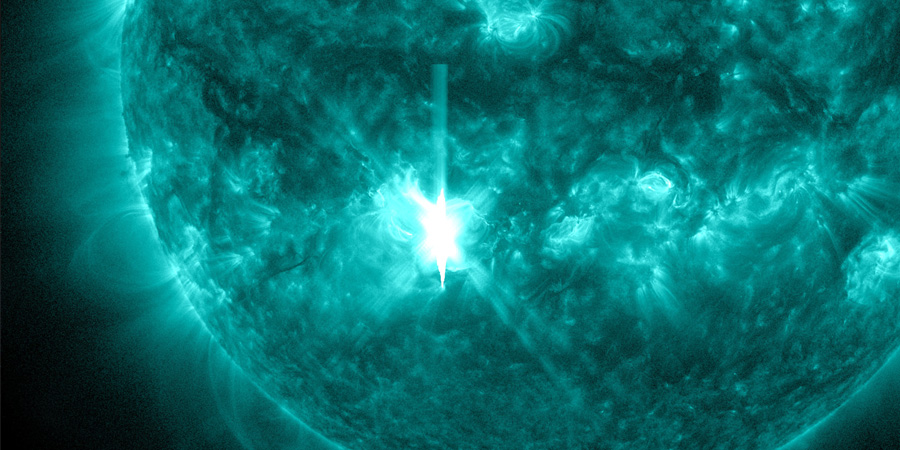X7.1 solar flare with earth-directed CME
Wednesday, 2 October 2024 02:43 UTC

A major X7.1 solar flare (R3 radio blackout) peaked on 1 October at 22:20 UTC. The eruption took place around complex Beta-Gamma-Delta sunspot region 3842 close to the center of the earth-facing solar disk. This was in fact the second strongest solar flare of the current Solar Cycle thus far! An exciting jump in solar activity after a relatively quiet period with multiple potent sunspot regions currently on the solar disk!
The X7.1 solar flare which produced a Type II radio sweep was not highly eruptive as you might expect from such an event but it did produce a halo coronal mass ejection with an earth-directed component. We can see this with the help of the SOHO/LASCO coronagraph which shows coronal mass ejections leaving the Sun from Earth's point of view.
However, a majority of the ejecta is heading south-east of our planet with only a faint halo outline directed towards Earth. The NOAA SWPC did issue a strong G3 geomagnetic storm watch for tomorrow, 4 October but it might be a tad on the optimistic side. There is no doubt this cloud will pass Earth, but it's intensity is a bit of a question mark. The same can be said about it's arrival time with the NOAA SWPC's ENLIL model forecasting an arrival time around 10 UTC but in their reports they are rather vague saying there is a small chance the cloud can arrive on the 3rd of 5th of October. That isn't very helpful, however based on the ambient solar wind speed and CME speed it seems it is more likely that the cloud arrives at the tail end of this span, which would be late (European evening) on Friday, 4 October.
The X7.1 solar flare from 1 October produced a faint asymmetrical halo CME that has a high likelihood to arrive at Earth on Friday, 4 October. More information and live data on https://t.co/XHATH0OOfT pic.twitter.com/MjTojqBSTg
— SpaceWeatherLive (@_SpaceWeather_) October 3, 2024
Thank you for reading this article! Did you have any trouble with the technical terms used in this article? Our help section is the place to be where you can find in-depth articles, a FAQ and a list with common abbreviations. Still puzzled? Just post on our forum where we will help you the best we can!
Latest news
Latest forum messages
Support SpaceWeatherLive.com!
A lot of people come to SpaceWeatherLive to follow the Sun's activity or if there is aurora to be seen, but with more traffic comes higher server costs. Consider a donation if you enjoy SpaceWeatherLive so we can keep the website online!

Space weather facts
| Last X-flare | 2025/03/28 | X1.1 |
| Last M-flare | 2025/04/18 | M4.4 |
| Last geomagnetic storm | 2025/04/16 | Kp8- (G4) |
| Spotless days | |
|---|---|
| Last spotless day | 2022/06/08 |
| Monthly mean Sunspot Number | |
|---|---|
| March 2025 | 134.2 -20.4 |
| April 2025 | 120.5 -13.7 |
| Last 30 days | 116.6 -25.7 |


